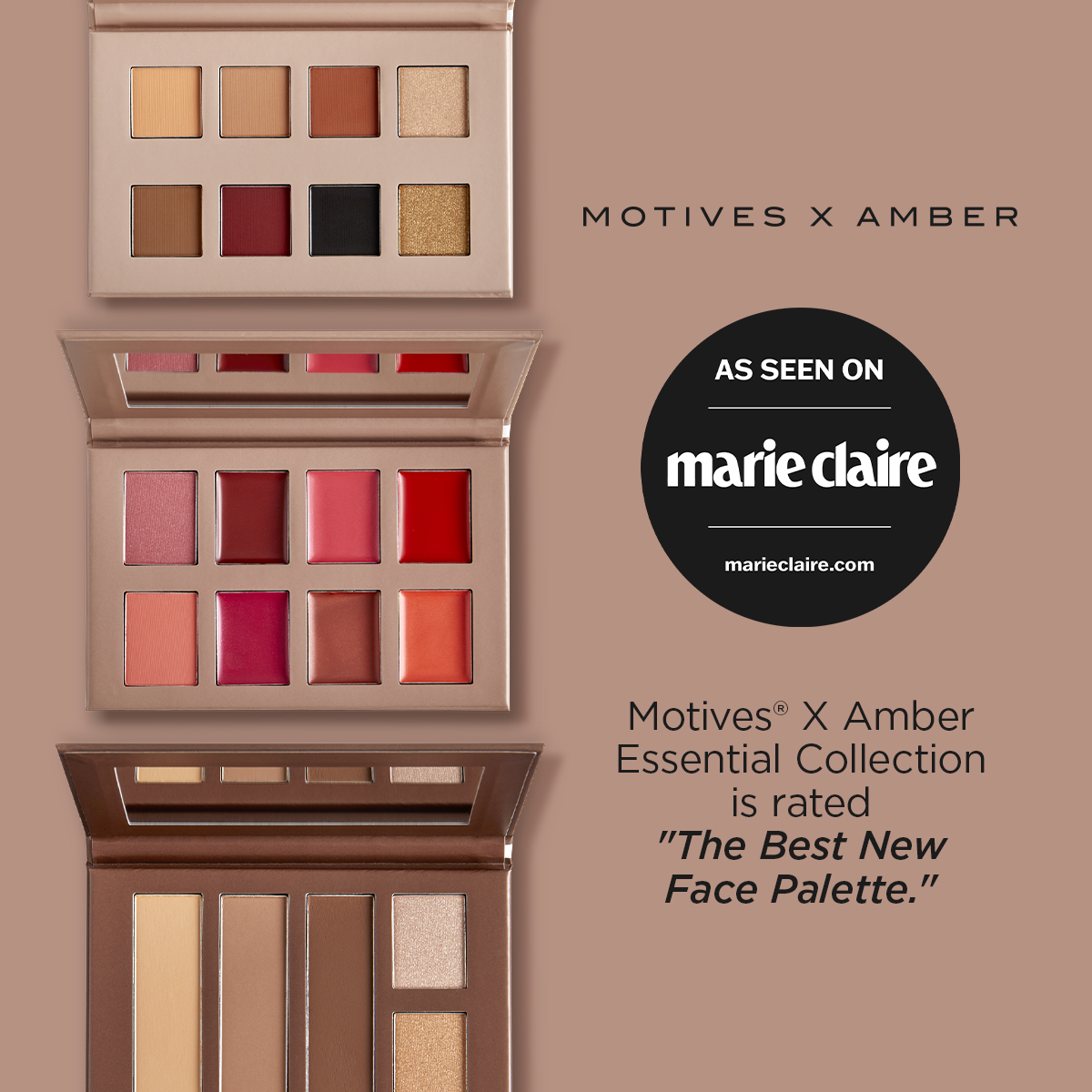The basics of brand identity would be your brand name, logo, fonts, and colors. While these are all crucial elements of your brand identity, it’s more than just the physical or aesthetic aspects of building a brand.
Your identity includes how you speak to your customers and communicate with them, as seen in private messages, captions on social media, and all written content across your marketing channels.
It directly affects how your customers perceive you and can decide whether or not someone will choose to support you.
When getting someone to decide between two identical products from two competing brands, it’s no longer a game of discounts and pricing. A customer would much rather support a brand that they can trust — which all boils down to their experience with you, either through a previous purchase or just by seeing your posts online. That’s brand identity.
Why is brand identity so important?
As mentioned above, brand identity helps differentiate you from your competitors, but there’s more to it than that.
Some of the most successful businesses out there invest millions of dollars on branding experts because they know that they are rewarded tenfold through sales. It helps keep them top of mind and promotes brand loyalty.
Image source: https://swww.apple.com/
Take Apple for example. Many smartphone users would choose Apple over any Android device despite the steeper prices and lower specs. The tech giant has a cult-like following thanks to brilliant branding.
Image source: https://www.nike.com/
There’s no talking about brand identity without mentioning Nike. More than just taking ownership of the simple checkmark, the sportswear brand has defined itself through the athletes it sponsors, the campaigns it runs, the causes it supports, and so much more. Thanks to its efforts, billions of people across the globe know about the brand, regardless of age or even economic status. Everyone knows Nike.
But even if you don’t have a huge budget, that doesn’t mean you can’t reap the benefits of a strong brand identity — something that you can build on your own with enough time and careful research.
Bringing your brand identity to life on Instagram
Through the years, 90% of businesses that utilize Social Media Marketing have observed a marked increase in their business exposure. With more than 1.15 billion people actively using the platform every month, Instagram has proven to be a marketing powerhouse for all brands, big and small. It’s clear that the photo-sharing app is the place to be to grow a business, but everyone already knows that, which means it could feel crowded.
Hundreds, if not thousands, of other brands could already be selling similar or even identical products to your target audience. How do you compete? You may be selling higher quality products than your competitors, but “quality” cannot easily be translated through photos or even videos.
The answer is in your brand identity. To stand out and differentiate yourself from every other business on social media, you need to create a brand identity that’s unique and attention-grabbing.
Remember: the first impression is always Important
Your bio is the first thing Instagram users will see when they click on your profile so think of it as your elevator pitch — the hook that drags potential clients in. A good Instagram bio should answer who you are and what you do in as few words as possible.
Image source: https://www.instagram.com/bookofthemonth/
Book of the Month (@bookofthemonth) a subscription-based book club has a simple and straightforward bio that communicates what it does perfectly. The rest of the space was used for a call-to-action (CTA) to encourage more user-generated content.
Just because you’re given so few characters to summarize who you are in your Instagram bio, doesn’t mean you can’t have fun.
Image source: https://www.instagram.com/theoriginalmoonpie/
Moon Pie (@theoriginalmoonpie) — a brand that’s famous for its snarky and relatable social media identity — has an Instagram bio that barely says anything. For other brands, this style might feel lacking, but for Moon Pie, it’s completely on-brand.
Aside from the text in your bio, don’t forget to include a website link or a promo landing page that you want to highlight.
Your profile photo is also an important aspect of establishing your brand identity so make sure that it’s clear and easily identifiable. More often than not, brands use their logos as their profile photos. However, if your logo isn’t recognized yet, you might want to consider attaching your company name to your photo. A profile photo might seem like a no-brainer, but many brands make the mistake of using a low-quality image.
Music is another way to bring out your brand’s personality. Do not forget the power of a good soundtrack for movies, same goes for your posts albeit on a much smaller scale. From upbeat to dramatic to peaceful, music can dictate the mood of your viewers and how they see your brand.
Solidify your look
On Instagram, visuals will always be king. Unlike posts by regular Instagram users and content creators, brands need to be more particular about the content they post and the type of filters they use. Having a powerful brand identity on Instagram means that your followers can identify your content without having to see your username.
Eggslut’s (@eggslut) Instagram account is filled with close-up shots of their iconic all-day breakfast sandwiches. The photos also use a subtle yellow hue that perfectly contrasts the sunshine-yellow brand color.
Milk Bar (@milkbarstore) is another great example of a brand with a strong and established brand identity on Instagram. The bright pink, which is the brand’s primary color, is artfully peppered in most, if not all, of its photos. The Milk Bar logo is also featured in most content so there’s no mistaking a Milk Bar post for just any other bakeshop.
To achieve this, you need to already have your logos, fonts, and colors finalized before publishing your first post on Instagram. You should also have go-to filters that will highlight and complement your brand colors.
Pro tip: Don’t settle with ready-made filters, or else you’ll end up looking just like everybody else. Use apps that allow you to customize or combine filters to create something that’s uniquely on-brand. Don’t be afraid to deviate from the usual static effects; experiment with motion and overlays to create content that pops out of your feed.
Remember: it’s important to consider how each post will affect the look of your Instagram grid for at least nine consecutive tiles.
Since Instagram Stories only has a handful of built-in fonts, you will have to edit your content outside of the app.
To get the exact color that you need on Instagram Stories:
1. Go to Instagram Stories
2. Upload your content
3. Tap on the “Add a Photo” sticker.
4. Choose a photo of your brand’s color palette
5. Use the eyedropper tool to find your desired color.
Once you’ve found your color, you can use it as your Stories background, for your fonts, or on the drawing tool.
Don’t take captions for granted
Visuals may rank ahead of captions in terms of priority but that doesn’t mean that your captions should take the back seat. Sometimes, an image alone cannot deliver the message you want to convey. More importantly, captions are what help shape your voice as a brand.
Great videos and images may give you the double-tap, but captions are what start conversations and get people to engage.
The National Geographic (@natgeo) Instagram account is famous for sharing stunning photos from around the world. While the photos alone can probably capture the attention of its followers, without the well-thought-out captions, these photos will be left with no context and less impact.
The next time you publish a photo, take time to think about your caption. It doesn’t always have to be profound but let it have a purpose. Instagram has a 2,200 character limit for captions, so you don’t have to worry about losing space.
Create meaningful posts
Not all of your posts should focus on selling your products. Sometimes, it’s good to take a break from “money-making” to talk about important issues. In fact, today, big brands that choose to stay silent on major issues are usually frowned upon or questioned by their customers.
During the time that the United States was experiencing an onslaught of racially motivated hate crimes, Nike (@nike) posted a simple video that communicated its stance on the issue. Scroll through Nike’s Instagram page and you’ll notice that the brand is not afraid to chime in on social issues.
On the contrary, many brands are afraid to get involved in social or political issues for fear of losing customers. While it is completely understandable to be hesitant about voicing your opinion on sensitive matters, remember that silence may speak louder at times.
Adding your voice to the conversation is a great way to connect with your audience at a deeper level. After all, customers are more inclined to support brands that align with their personal beliefs and values.
Of course, don’t post about something you don’t really care or even know about. Your customers are smarter than ever before, they can see whether you’re being genuine or if you’re just adding to the noise for the sake of it.
More than just an opportunity to solidify your identity as a brand, addressing pressing issues is also a way to start conversations with your customers and understand them better.
Craft shareable story templates
Story templates are designed to be filled out and shared. It’s a fun throwback to the simpler days when people would exchange notebooks with little questionnaires you can answer.
The Instagram Story template is not only a brilliant way to learn more about your followers, it’s also a genius branding tactic.
Popular astrology app Co-Star (@costarastrology) created a bingo-type template that its followers can screenshot, answer, and share.
If you’ve seen other brands and content creators sharing similar templates, you’ll notice that these templates always come with a watermark or a logo. This means that every time a follower shares your template, your content can reach Instagram users outside your current network.
Shareable story templates are a simple yet powerful way to get your brand out there without spending big money on advertising— always use recognizable branding elements!
Consider integrating and repurposing your stories into your email marketing to get more mileage. Try using a drag & drop email template builder to create personalized templates that’s on point with your brand. By creating your own template, you’re exposing your brand to a bigger audience who probably fall under your target market. Plus, if you create stunning graphics that are on-brand, people are more likely to visit your profile and hit the follow button.
Publish unscripted moments
The idea of a strong brand identity might be of a brand that has everything perfect and polished. While this may be true to some extent, it doesn’t mean that “perfect and polished” is what your audience is looking for.
According to a study, 86% of consumers look for brands that show authenticity. While it might seem like a loaded word, heavily edited photos and a well-curated timeline doesn’t exactly scream “authentic”.
Everyone knows that most Instagram users — even private ones — take dozens of photos before landing on the published output. Dispell that idea of perfection by posting unscripted moments. This can be through “before and after” images on your timeline or behind-the-scenes clips.
In order for your customers to relate to you, you have to be relatable! Think about it, the market is filled with enough brands that set unrealistic standards, be the brand that breaks that stigma.
Ron Stefanski of OneHourProfessor.com explains, “When Instagram first started out, the only thing that mattered was the images you posted. Now it’s become this media behemoth where entire brands can be built (or destroyed) based on their lack of authenticity. Every brand should have a face and a personality, make sure you’re no different.”
If you don’t want to ruin the look and feel of your feed, use Instagram Stories to share your unscripted moments. After all, the feature was built for users to share their “a day in the life” moments.
Stephanie Bonnin, chef and owner of La Tropi-Kitchen (@latropikitchen), always shares snippets of her days whether she’s working behind the kitchen or shopping for ingredients. Scrolling through the La Tropi-Kitchen account and you’ll notice that almost everything feels personal and unfiltered.
The best thing about unscripted, behind-the-scenes moments is that they’re effortless and should take no time to post.
Remember: Don’t let go of your brand voice when posting unscripted moments. Don’t say something that can hurt your brand identity.
Tell your story
The reality of starting a business today is that the chances of being completely unique are almost impossible. There will be a brand out there, selling products similar to yours. However, one of the few things that will set you apart is your story. Nobody else can have the exact same story as yours.
https://www.instagram.com/amami.ph/
Amami (@amami.ph), a jewelry brand from the Philippines, is not your ordinary jewelry brand. Amami sells heritage jewelry handcrafted by local artisans using techniques that have almost disappeared thanks to fast fashion.
What makes Amami different is the people and the process that goes behind crafting each piece. This is why the brand often features its partner artisans and shares the history behind the craft.
Your brand is more than just the products you sell, don’t be afraid to tell your story. People may forget seeing a piece of jewelry on their Instagram timeline, but a piece with a story attached to it will linger in your head.
On top of dedicating certain posts to tell your story, it’s also important to think of your content calendar as your storyboard. As much as possible, each post should relate to the next, to keep your audience wanting more. Your post today should make your followers look forward to your post tomorrow.
Put a face to your brand
Ever since the concept of advertising was created, brands would hire celebrities or other famous personalities to endorse their products.
This is because adding a human face to your brand helps your audience connect with you on a more personal level. It’s also why brands are very careful about choosing the right person to represent them. Whoever you decide to endorse your brand should embody what you — as a brand — believe in.
But times have changed. Putting a face to your brand, especially in the age of Instagram, doesn’t always have to mean someone famous. Besides, who else would best represent your brand other than the person who created it?
Believe it or not, your customers want to know you. Occasionally appearing on your brand’s social media account can tear down the wall between brand and customer, increase trust, and promote loyalty.
People want to know that the business they choose to support isn’t just a money-making machine but rather a company of real people. A regular product post can easily be forgotten and lost among the thousands of advertisements we see every day. But a face is much harder to forget.
In between posting about its products and services, Zendesk (@zendesk), a Software-as-a-Service (SaaS) company, regularly features its employees on its social media pages. Posts range from having employees talk about their roles or even sharing their personal recipes.
Pro tip: Your employees are your brand’s best ambassadors. If your customers see that your employees are proudly using your products, then they will be encouraged to give it a try.
Start Building Your Brand on Instagram
With these tips to guide you, you’re now ready to create a powerful brand identity that can help you stand out from the crowd. Don’t forget to track your performance and take note of the type of content that works best for your audience.
Always remember that to succeed on Instagram, you have to be consistent in all aspects. Experiment, analyze, rinse, repeat.






